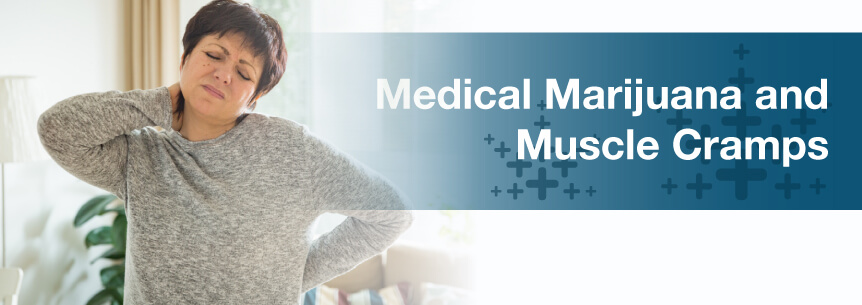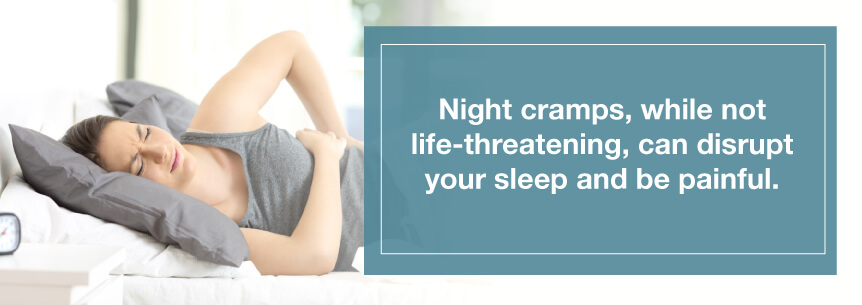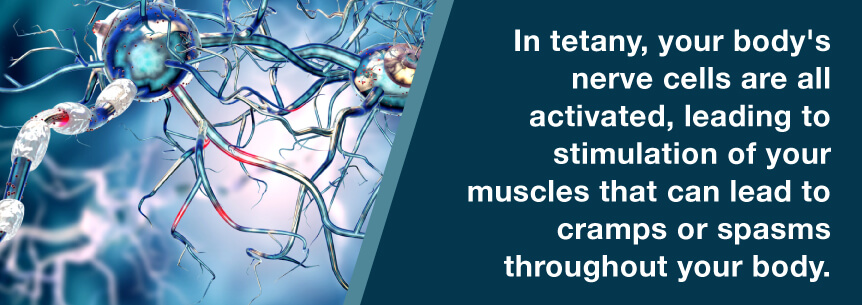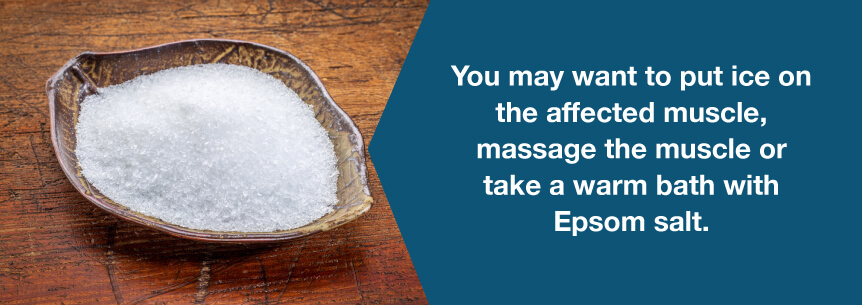
Coping with aching, stiff and cramping muscles for people with multiple sclerosis is a way of life. Many other individuals experience muscle cramps, which lead to limited movement, pain and lack of sleep.
While conventional medicines may help decrease the discomfort from muscle cramps and other symptoms, they don’t usually provide patients with complete relief. They also tend to come with side effects their patients find intolerable. Some patients are now looking into marijuana and muscle cramps treatment to find relief when conventional treatments don’t seem to tackle their symptoms.
Muscle cramps are involuntary and sudden contractions of your muscles. You likely know they can cause severe pain if a sudden charley horse ever stopped you in your tracks or has awakened you during the night. Although muscle cramps are usually harmless, they can make it virtually impossible to use the muscle affected while they are occurring. Cramps can affect part or all of one or more of your muscles.
The muscle groups most commonly affected include:
Also quite common are cramps in the arms, feet and hands, along with the rib cage and abdomen. Stretching the muscle can help stop the cramp. Also, the cramping muscle will feel bulging or hard.
Muscle cramps often occur in middle-aged and older healthy people. However, they can affect younger individuals as well. While cramps may occur while you’re resting, they tend to occur during or after intense exercise. Some individuals experience cramps while they’re sleeping.
Common causes of leg cramps are:
Just about everyone has had a muscle cramp at some point in their life. However, certain factors can increase the severity of the cramps and your risk of having them. Some factors include:
Things like alcoholism, diuretics, vitamin D deficiency, certain endocrine disorders or other conditions causing fluid loss can lead to low electrolyte levels.
You may get cramps shortly after going through dialysis, since dialysis can quickly remove your body’s fluid, which lowers your electrolyte levels.
Various other things can cause muscle cramps, including:
Some medications can also trigger muscle cramps as a side effect.
The numerous types of muscle cramps include the following:
True cramps may involve just one muscle, or they can involve a whole muscle group typically acting together, like your leg muscles or muscles that flex adjoining fingers. Many professionals believe hyperexcitability of the nerves responsible for stimulating your muscles causes true cramps. They’re among the most common form of skeletal muscle cramps and may occur in various circumstances.
These are true cramps linked with muscle fatigue and vigorous muscle use, such as with unaccustomed activities or sports. They can occur during your activity or afterward, in some cases, hours later. Muscle fatigue from repetitive use or lying or sitting for a long period in an awkward position may also cause cramps.
After an injury like a broken bone, you may experience persistent muscle spasms occurring as a protective mechanism. The spasm, in this instance, stabilizes the injury area and minimizes movement. You may suffer an injury to your muscle alone, which can cause your muscle to spasm.
Rest cramps are also common, particularly in older adults. Anyone, however, can experience them, including children. They usually occur at night. Night cramps, while not life-threatening, can disrupt your sleep and be painful. They may also recur several times during the night or several nights during the week.

Vigorous activities like sports and endurance activities often lead to perspiration causing excessive loss of fluid. This type of dehydration increases your risk of true cramps. Dehydration cramps tend to happen more in warm weather and may indicate heatstroke. Diuretics causing chronic volume body fluid depletion and poor fluid intake can lead to dehydration.
You can also experience true cramps in other conditions affecting body fluid distribution. Cirrhosis of the liver is one example, which results in fluid accumulation in your abdominal cavity. Cramps are typically also a frequent complication of kidney failure or dialysis where there are rapid body fluid changes.
When you have lower blood levels of either magnesium or calcium, it can increase nerve ending excitability, as well as the muscles they stimulate. Pregnant women often have low levels of magnesium and calcium unless they supplement them in their diet. Other causes of low magnesium or calcium levels in body fluids resulting in cramps include:
In tetany, your body’s nerve cells are all activated, leading to stimulation of your muscles that can lead to cramps or spasms throughout your body.

Dystonic cramps are where muscles that are not required for a certain movement become stimulated to contract. These types of cramps tend to affect smaller muscle groups like in your:
Cramps can occur in your arms and hands while performing repetitive activities, like writing by hand or playing specific musical instruments. Muscle cramping from repetitive activities is usually due to muscle fatigue.
Cramps are nothing new. In fact, you can even date them a minimum of a century back. No matter how long they’ve been around, there is one thing for certain — muscles don’t cramp by themselves.
Scientists have begun solving the mystery of why people get muscle cramps. As the causes of muscle cramps become clearer, these researchers are beginning to come up with new ways to prevent and treat them.
Symptoms of Muscle Cramps
Your muscle cramps can range in severity from just the slightest tic to debilitating pain. When your muscle cramps, it becomes hard to the touch and appears distorted beneath your skin. Muscle cramps may last anywhere from several seconds to more than 15 minutes. They can recur several times before they go away. Aside from the sharp, sudden pain, you may also notice the muscle is contracted and feels lumpy.
Muscle cramps tend to go away by themselves and are typically not serious. They also don’t usually require medical treatment. However, if you notice any of the below, you should see your doctor:
Even though muscle cramps are aggravating, they’re typically a benign condition. Their significance is usually limited to inconvenience and discomfort. However, when your muscle cramps become severe or persistent, you should seek medical help.
Many individuals experience muscle cramps so severe and frequent they become disabling. They can also impact regular sleep patterns significantly, which may worsen chronic pain and lead to anxiety and depression.
In clinical practice, patients often complain of muscle cramps. Cramps often link with abnormalities of the following natures:
Cramps are involuntary, painful contractions of your skeletal muscle and often occur in people with cirrhosis. They’re thought to be a cirrhotic-stage liver disease symptom.
Statistics about muscle cramps show:
You can use self-care measures to treat muscle cramps. Your physician can recommend some stretching exercises you can perform to help decrease your risk of experiencing muscle cramps. You need to stay well-hydrated as well. If your cramps are recurring and disrupt your sleep, your physician may prescribe medicine designed to relax your muscles.
Stretching exercises are good for reducing the pain of a charley horse. You may also want to put ice on the affected muscle, massage the muscle or take a warm bath with Epsom salt.

Your doctor will begin by asking you questions about your medical history and symptoms. They’ll then perform a physical exam. They’ll decide on what tests to run depending on the exam and your medical history. If your cramps are due to a disorder, they’ll treat the disorder. They may also prescribe you medications, such as the ones listed below, to prevent the recurrence of muscle cramps.
Many of these medications haven’t been proven too effective, and they often come with side effects. Doctors have suggested quinine, but this drug can also have side effects, including ringing in the ears, headaches, vomiting and vision problems.
Another medication doctors may prescribe is mexiletine, whose side effects include nausea, vomiting, seizures and tremors.
Marijuana and muscle cramps treatment far exceeds speculation and anecdotal accounts. Researchers continue to explore the effects of the herb on muscle cramps and spasms, with promising-looking results. In fact, one study on smoked cannabis for multiple sclerosis patients showed people who smoked medical marijuana had improvements in both spasticity and pain. Also, there weren’t any adverse side effects from the weed during the study’s duration. Authors of the study concluded smoking cannabis was far better than a placebo in pain and other symptom reduction in the patients with treatment-resistant spasticity.
Muscle cramps, regardless of whether they are a result of mineral deficiencies, menstruation or muscular spasticity, can be extremely painful and hard to eliminate. Doctors often use anti-inflammatory drugs and harsh pain relievers to provide their patients with relief.
However, too much of these types of medications can cause stomach problems and other adverse side effects, including addiction. Medical marijuana for muscle cramps has anti-inflammatory and pain-relieving properties patients swear by to give them maximum relief. Also, the evidence is growing in regards to CBD and THC having protective and healing effects on your central nervous system.
Cannabis is effective in treating the pain related to muscle cramps. Those who suffer from recurrent leg cramps may feel depressed as well, which medical cannabis can help. It also helps treat the inflammation and swelling some people have with cramps.
Individuals with chronic muscle cramping may also suffer from sleep disturbances, since the pain can suddenly awake them or keep them awake.
Although the following cannabis and muscle cramps strains aren’t medically proven officially for treating and curing leg cramps and muscle spasms, users are reporting positive feedback stating they’re helping to prevent cramps and handle the pain.
A common delivery method of medical cannabis is smoking it. It’s also among the quickest ways of getting the chemicals into your body. Using a water pipe or bong, a glass pipe or rolled cigarettes are all ways of smoking medical cannabis. Smoking is an efficient and quick way to get your maximum dose of cannabinoids into your system. You’ll feel the effects almost instantly, and you can smoke as much as you want until you reach your desired relief. However, there is a risk of respiratory problems.

Therefore, patients are turning to other marijuana delivery methods such as:
No matter which method you prefer, always start off slowly with your dosing and add a little more until you find the best dosage for you to help treat your muscle cramp symptoms.
To obtain relief from your muscle cramps, you need to consult with a marijuana doctor and receive your recommendation. They’ll answer your questions and give you guidance on your cannabis products. Visit MarijuanaDoctors.com to search our directory of qualified cannabis doctors and find marijuana dispensaries.
Find A Doctor Find A Dispensary